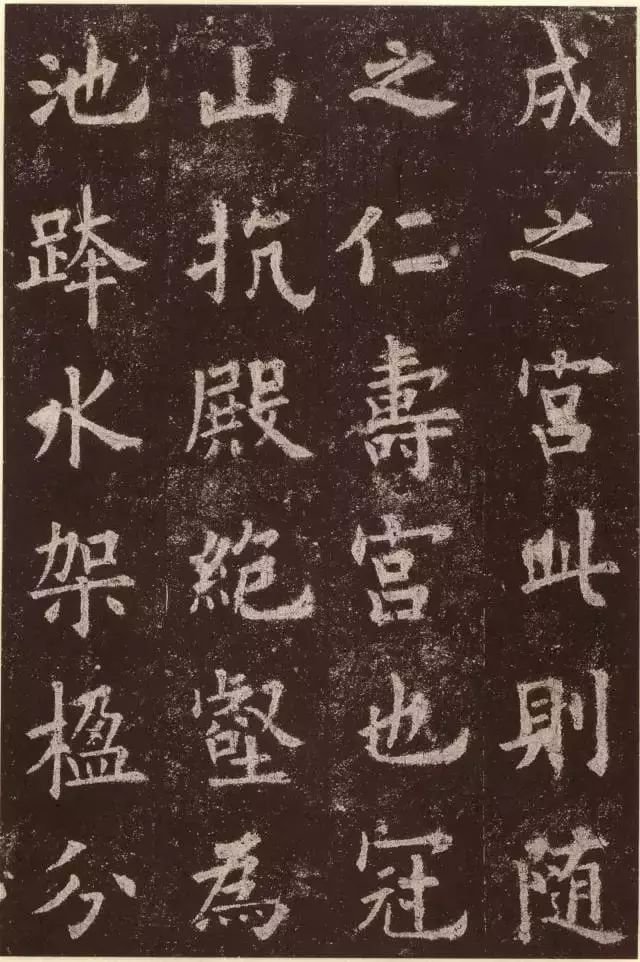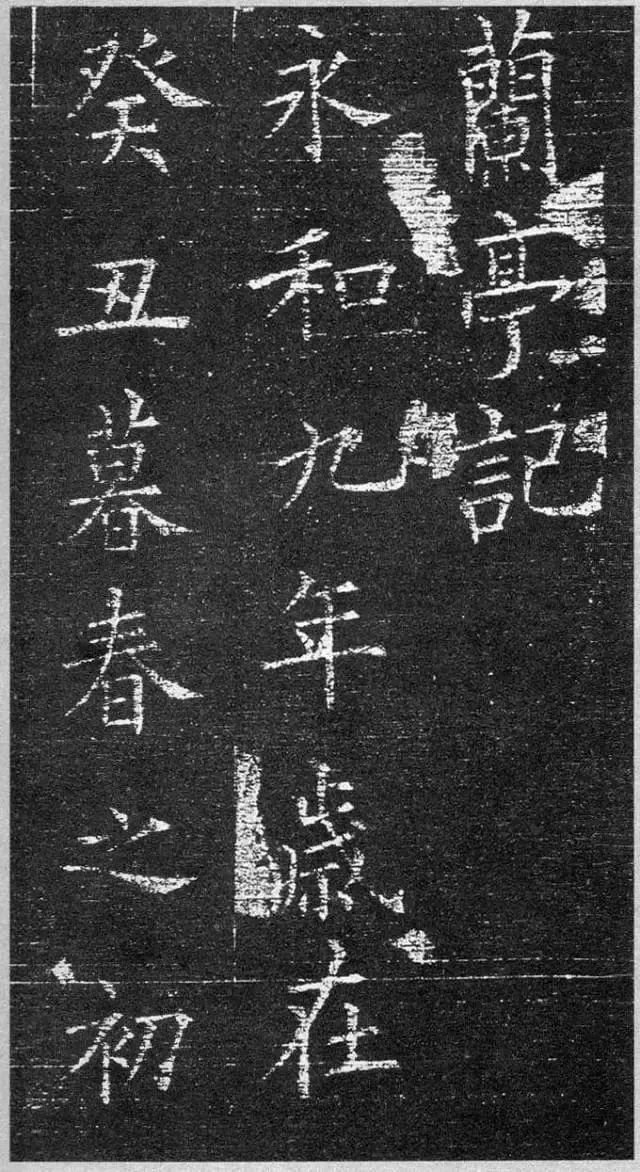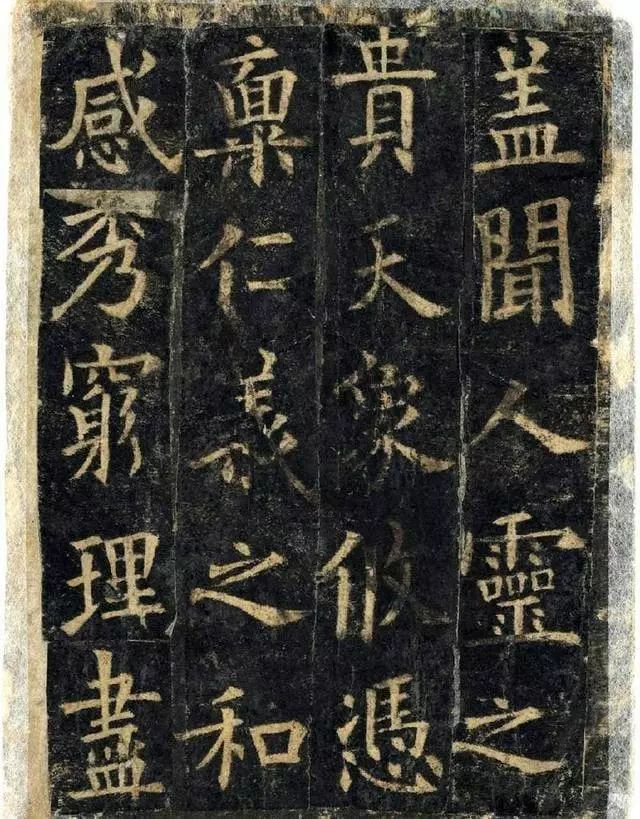Ouyang Xun is a calligrapher with little controversy. Jiang Kui's "Sequel Book of Books" says: "True books regard fairness as good. This is a secular theory and was lost by the people of the Tang Dynasty." In one sentence, the people of the Tang Dynasty rejected it. Kang Youwei's book "Guang Yi Zhou Shuang Ji" disproved the teachings that had been passed down for more than a thousand years. In the more than a thousand years since the Tang Dynasty, although famous scholars emerged in large numbers, they could not agree on one thing. In particular, the dispute over the inscriptions is still ongoing! This is called literary criticism, and literary criticism promotes the progress of literature and art.

"Jiucheng Palace Liquan Inscription"
Let's talk about Ouyang Xun. When Li Shimin, Emperor Taizong of the Tang Dynasty, came to the throne, Ouyang Xun was already in his 60s, and the "European style" calligraphy style had already been formed. Therefore, it should not be included in the "cursing" list. Through the study of Ouyang Xun and Wei Stele, I found that Ouyang Xun's writing style originated from "Su Xiaoci's Epitaph", his structure from "Dong Meiren's Epitaph", his dangerous style from "Zhang Menglong Stele", and his elegance from "Longzang Temple". I say that Ouyang Xun is less controversial because he wrote the law to its peak. For more than a thousand years, no one can match it!

"Orchid Pavilion", written in regular script by Ouyang Xun in February of the second year of Zhenguan (628), Emperor Taizong of the Tang Dynasty.
Ouyang Xun first imitated Wang Xizhi when he practiced calligraphy, and then found his own way. In particular, his regular script is strong and strong, and his rules are strict. He was regarded as a model by later generations of calligraphers and passed down to the world as "European style". "Shuguan", a calligraphy appraisal work of the Tang Dynasty, said: "The eight styles of inquiry are as strong as possible, and the writing power is strong and dangerous. The seal style is especially exquisite, with flying white crowns, superior to the ancients, disturbing the image of a dragon and snake fighting, the force of a light cage in the clouds, and several whirling thunders Ji, the exercise is like a god. The book of Zhenxing comes from Tai Ling and is integrated into one body. It is as dense as a spear and halberd in an arsenal. The wind god is stricter than Zhiyong and less polished than Yu Shinan. His cursive script circulates repeatedly and is regarded as the two kings. He moved his color, but was startled by his leaping horse. He did not avoid danger and was injured by the Qing Dynasty." Ouyang Xun's Jiucheng palace post in the Song Dynasty's "Xuanhe Shupu" praised his regular script as "the crown of calligraphy".
According to historical records, Ouyang Xun's appearance is very ugly, but his calligraphy is famous all over the world. People are vying to get the Chidu script written by him. Once they get it, they regard it as a treasure and use it as a model for their own calligraphy. During the Wude period of the Tang Dynasty (618-624), Goryeo (located in today's Korean Peninsula) specially sent envoys to Chang'an to obtain Ouyang Xun's calligraphy. Li Yuan, Emperor Gaozu of the Tang Dynasty, sighed and said: "I didn't expect that Ouyang Xun's reputation would be so great that even the distant Yi Di people knew about it. When they saw Ouyang Xun's handwriting, they must have thought that he was a tall and tall man."

Ouyang Xun died in the Zhenguan period (626-649) at the age of more than 80 years. The ink inscriptions handed down after his death include "Bu Shang Tie", "Zhang Han Tie", etc., and the inscriptions include "Jiucheng Palace Liquan Ming" and "Huangfu's Birthday Stele". ", etc., are all treasures of calligraphy art. Later generations will call him "the four great calligraphers of the early Tang Dynasty" together with Yu Shinan, Chu Suiliang and Xue Ji.
Ouyang Xun is not only a great calligrapher of the generation, but also a calligraphy theorist. In his long-term calligraphy practice, he summed up eight methods for practicing calligraphy, namely: "Like a falling stone from a peak, like a crescent moon in the sky, like a thousand miles away." The formation of clouds is like a long-lived withered vine, like a strong pine tree bent upside down, like a hanging stone cliff, like the hair of a crossbow, like a sharp sword cutting off a rhinoceros horn, or like a wave of pen." Ouyang Xun's "Teaching Techniques", "On the Use of Brushstrokes", "Eight Secrets", and "Thirty-six Methods" are all summaries of his own experience in learning calligraphy. They summarized the use of brushes, structure, and composition of calligraphy in a more specific way. Such calligraphy formal skills and aesthetic requirements are precious heritage of my country's calligraphy theory.








